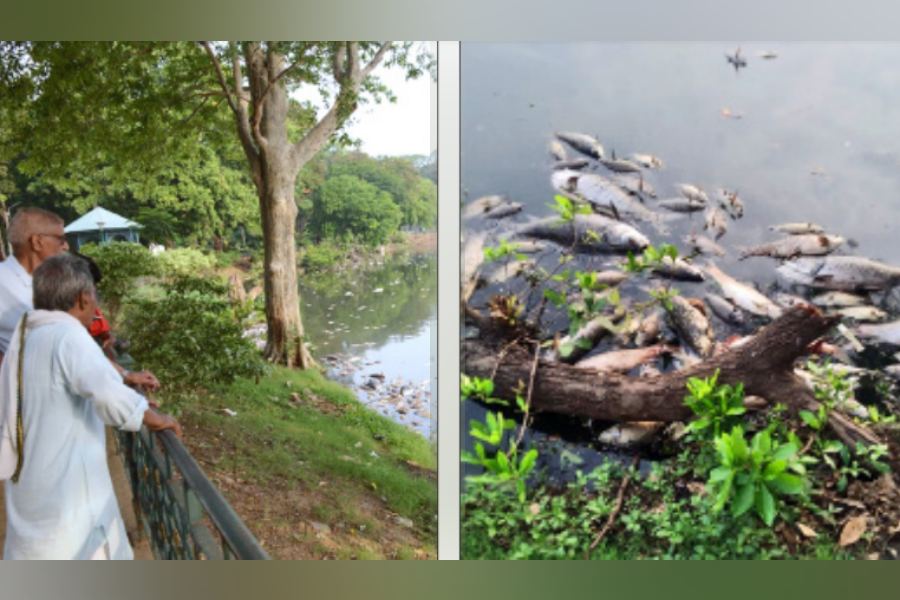High level of ammonia and reduction of oxygen level at night in the Jayanti Sarobar, popularly known as Jubilee Lake, in Jamshedpur was the reason for the large number of fish deaths in mid-June.
A report submitted by the state fisheries research centre, Ranchi, to the Tata Steel Utilities and Infrastructure Services Limited (TSUISL) — the utility arm of Tata Steel — which looks after the Jubilee Park has indicated a significantly high amount of ammonia in the water body.
The Jubilee Park houses the lake sprawling on nearly 20 acres and home to a large number of Indian carp (mrigal), catla (katla), rohu (rui), tilapia cichlid (telapiya) and catfish. The optimum range of ammonia ideally in water bodies should be less than 0.5 parts per million (ppm) but it was found to be 4ppm at the Jayanti Sarobar.
The dissolved oxygen level should ideally be greater than 4ppm in water bodies while it was found to be 4. The carbon dioxide level was also significantly higher. Ideally, it should be less than 15ppm but it was 24. The water temperature should ideally be between 26-32°C whereas it was 37.6°C on the day when the sample was collected.
A four-member team led by the assistant director of the fisheries research centre, Navranjan Tirkey, had collected the samples from the Jayanti Sarobar on two occasions after being informed about a large number of fish deaths on June 19.
“The water colour was found to be green which happens only when there is a high amount of organic load and phytoplanktons (microscopic algae). The soil of the water body colour was black which indicates that the organic matter content is high in the soil,” the report concludes.
The centre has suggested the TSUISL to increase aeration and water exchange to increase the oxygen level in the water body by using water pumps and administering tablets and toximar or zeolite tablets.
It advises that by increasing dissolved oxygen level the ammonia level can also be reduced. The report has suggested that till the situation improves, the feeding of fish should be stopped. Fish deaths have been reported in the Jayanti Sarobar during extreme heat (May-June) even before Covid-19 times.
In May 2014, Jharkhand High Court had directed the state pollution control board and the Tata Steel subsidiary to take immediate measures to protect aquatic life after nearly 200 fish floated up dead at the same lake in the same month.
East Singhbhum district fishery officer Alka Panna confirmed sharing the report with the TSUISL officials. “It is now up to them to act on the suggestions as the water body is managed by them,” Panna said.

